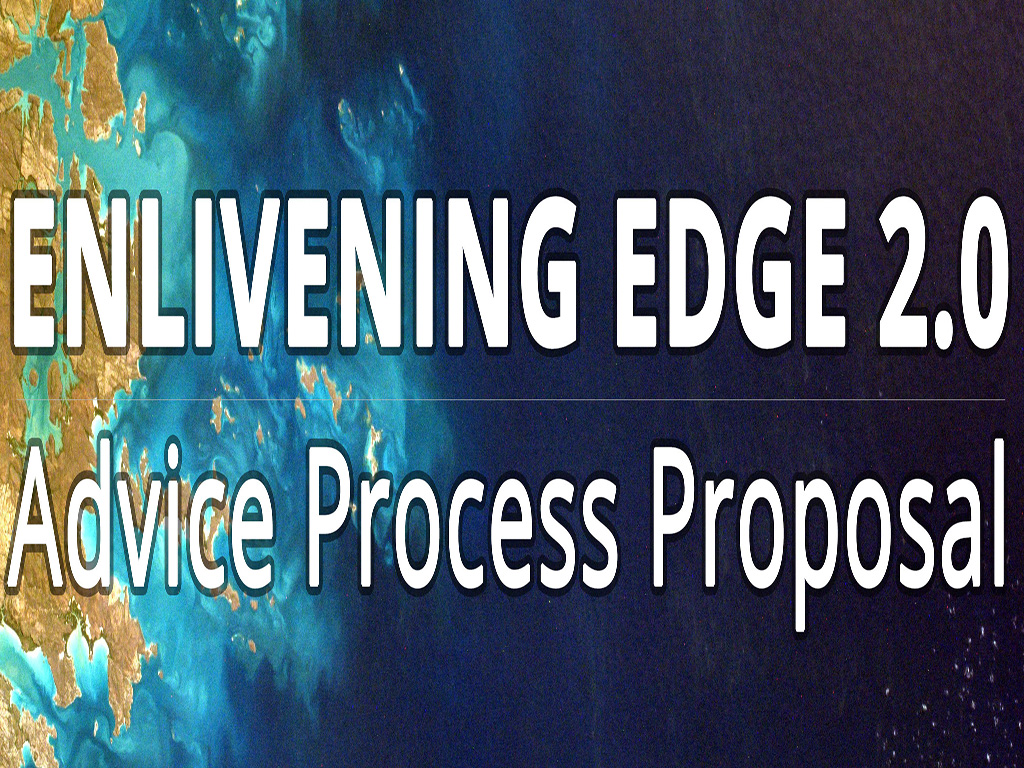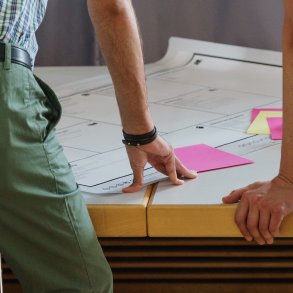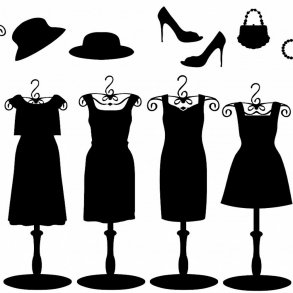prepared by George Pór, Lia Aurami, and Chris Clark, the energizers of the Vision Holders role in the General Circle of Enlivening Edge
This article invites you to give advice, to shape the ongoing evolution of Enlivening Edge.
The purpose of this text is to set the overall strategy for reinventing Enlivening Edge, but does not propose how to engage and energize each branch of its evolution. In order for each of the innovations below to manifest, we need players who are willing to join us, to initiate advice and energize roles in every functional area. That is the next phase of this process. This text is intended as the foundation: an advice process regarding the overall vision.
As organizers of the 2nd Integral European Conference’s “Teal Organisations” track, Enlivening Edge is in a privileged position to see into the depth and breadth of organisational innovation inspired by Frederic Laloux’s work, and by next-stage thinking even among those who haven’t read his book. The variety and quality of the proposals submitted thus far speak of effervescent developments in the Teal ecosystem. And the “reinventing organizations” movement is only one of the growing number of collective efforts to make work and workplaces more joyful and self-managed, worth investing our talents and dedication.
The evolutionary purpose of Enlivening Edge is “to amplify the collective wisdom and effectiveness of initiatives for reinventing organizations and social systems.” It’s a purpose more propitious than ever, and calls for a re-thinking of the infrastructure that will enable us to express it at a scale wider than when George conceived this publication, a year ago.
To better serve the growing “next-stage-org” movements, EE needs to evolve into the next version of itself. To do that with our currently limited resources requires making innovation central to everything we do.
We see the essence of these innovations as EE’s identity morphing from a website with a newsletter into an online magazine, sustaining and sustained by a network of communities of practice, a knowledge commons, and a “social benefit” company.
Those aspects of our evolving identity are expressed via the following proposed areas of innovation and development of EE:
- Social Innovation: EE is an experiment in bolstering the emergence of radically new organizational structures and practices. EE as a social medium does that by catalyzing connectedness among the organizations, communities, and initiatives in the forefront of that emergence.
- Knowledge Innovation: EE collects, organizes and makes widely-accessible, knowledge relevant to the fields of organizational and societal transformation into the next stage. We are developing a new ecology of knowledge production, dissemination, and use.
- Business Innovation: Looking at the essence of business through holistic lenses, we see it as nourishment for life. (Btw, that’s the literal meaning of the Swedish word for business “näringsliv.”) For life to carry itself forward with the least obstacles possible, the energy flowing through organizations must find the most suitable economic form/vessel. Enlivening Edge is searching for that form.
- Technology Innovation: Technology innovation is not only what comes from the laboratories of inventors or peer-to-peer networks of geeks, but also from groups on the edge of social, knowledge, and business innovations making novel uses of combinations of emergent and proven technologies.
Social innovation
EE is not only an online publication but an organic part of a living, breathing ecosystem of organisations going Teal and the “ecosystem services” (RO wiki, workshops, Teal meetups, etc.) supporting them. Our impact depends—to a large extent—on the strength of our relationships with those organizations and services.
A centerpiece of our “social innovation” work, this year, is to galvanize the “reinventing organizations” movement by bringing together representatives of innovative projects in the TealOrg track of the 2nd Integral European Conference. We are curating the track for reaching new breakthroughs by making those projects more visible to each other and to the hundreds of conference attendees.
We want to develop and embody new standards of excellence in movement journalism. That requires continuous improvement of the quality of writing and of all aspects of our work, in a community of “Teal writing” practice. It will also be supported by a professional writing coach who has just joined our circle to energize the Writing Mentor role. We will also encourage the formation of communities/networks of our country correspondents, social reporters, videographers, copy editors, and other contributors.
While our primary focus remains serving the journey of organizations going Teal, we also want to strengthen our coverage of the sectors of society at large, where there are initiatives pointing to Teal. Our Health Sector coverage is already becoming a go-to place for healthcare radicals working on reinventing the health system.
The coordination of select projects is another example of “sense-making” and catalyzing forward momentum between members of the Teal constellation. We directly manifest our evolutionary purpose by lending support to the promotion and coordination of these projects, such as “Teal for Startups” or “City as Commons.”
Further, we are actively building unique partner relationships with other like-minded organisations, e.g., the Unleash Network and Neo.
Social innovation also includes the development of different kinds of partnering relationships, for example, to help EE content reach new audiences, by syndicating it for non-English editions. Another example can be working with Teal-oriented organizations to develop with them in-house editions of EE.
Knowledge innovation
We are curating content from the knowledge sphere of transformational movements. We do it as a knowledge commons, with all our content offered for free to present and future generations participating in the transition to a more beautiful world.
We equip individuals and organizations with knowledge of cutting-edge transformational practices as they emerge, by curating original and cross-posted content. Swimming in the rich flow of information, insights, and inspirations, we want to steward innovative processes for making sense out of them, together with their originators. We draw upon the breadth and depth of developments in the Teal world to connect the dots in a bigger picture, and make that information available to all who can benefit from it.
To that end, our critical challenge is to multiply feedback loops and let valuable insights flow through them at greater speed. Hence our intent to introduce new and more effective channels of interaction with our readers, contributors, and other stakeholders. We want to engage in discovering and cultivating new relationships with the “reinventing” ecosystem, building bridges between communities, and exploring fresh distribution channels. Here are a few examples:
- In 2016, we will expand the organic synergy potential between the Reinventing Organizations wiki that the wiki team is in the process of redesigning, the Enlivening Edge online magazine (EE webzine), and the “The Best of Enlivening Edge” digest that we publish on Medium.
- As the organizers of the Teal Organisations track of the 2nd Integral European Conference, we are going to experiment with wrapping the conference in a blanket of “collective intelligence” tools and practices, and with documenting the learning from that experiment.
- One of the “knowledge innovation” possibilities that we hold lightly is to grow a Community Knowledge Garden, comprised of patterned descriptions of effective Teal practices worth replicating. This could be developed in collaboration with the Reinventing Organizations wiki if there’s mutual interest and capacity to support it. If you’re familiar with pattern language, inspired by envisioning what it could do for the Teal movement, and feel like supporting this possibility coming alive, let us know.
- Another possibility is to experiment with what a Teal-inspired webinar series might look like, if thought leaders and trailblazing practitioners show up to energize it. Already, our expression of this possibility in the January Editorial of EE has brought forth an invitation from a group, to collaborate on production of webinars.
Once realized, the outcome of all these innovations will become part of the knowledge commons that we are stewarding.
Business innovation
The social and knowledge innovations presented above call for an adequate economic vehicle to sustain them.
Enlivening Edge is not only a community of practice, and a knowledge commons. To thrive and continually delight the movements that it serves, it needs also to become a Teal media enterprise, a new kind of a cooperative company.
We anticipate that to keep manifesting our evolutionary purpose and delighting our stakeholders, those three aspects of our identity will need to co-evolve in mutually supportive relationship with each other.
Can we become a network of communities generating the commons content, on top of which the cooperative, “social benefit” company provides fee-based, value-adding research and educational services, such as other open source companies do? If yes, then the surplus from the Teal media enterprise can flow back to feed the communities of practice and the knowledge commons.
“Holding lightly” these possibilities also means that we provide the platform and the invitation, but realizing some of it will depend on the inspiration and energy of those of you who feel called to turn this or that possibility into action.
Technology Innovation
To expand our capacity to exercise our evolutionary purpose, we continually upgrade our tech platform to make it available to recent breakthroughs in technology. For example, having just added Medium.com to the channels throug which we distribute our content, we can expand our impact via a variety of media, e.g., Enlivening Edge TV on YouTube, where we publish videos. What will make that possible is video, film-maker and film-animator supporters having offered to express EE in that medium too. We anticipate that the we will also publish e-books and develop games and mobile apps, when enlivener with the respective competence will step forward to join us.
We are in the process of making our re-published video content more prominent and better organised, by configuring a Video Gallery plugin to its full power, so that all of the videos related to specific sections of EE can be found more easily.
We also want to explore and experiment with the tools and practices of transmedia storytelling. If you are or want to be involved in transmedia, this is a good opportunity to put your interest in service of moving its edge for the sake of reinventing organizations.
We’d like to add to our web platform, plug-ins which would enhance its functionality. We’d also like to do mashups with emerging technologies that can power up innovative uses of EE (if capacity permits). Our Technology Steward Role has this accountability.
Next steps
- It is critical that we mobilize together in an advice process, to further refine the vision laid out here. What’s popping up for you? Where did you feel a tug of energy? Where did you feel a “catch” inside?
It’s important to note that this text sets the overall strategy for Enlivening Edge’s next stage of evolution, but does not propose how to engage and energize each branch of that evolution. In order for these things to manifest, we need players who are willing to join us to initiate advice and energize roles in every functional area. That is the next phase of this process; this text is intended as the foundation.
- IEC 2016 will be a watershed event for the Teal movement and we want to be ready to serve it with enhanced capacity to carry and amplify the energy that we are enlivening and enlivened by.
We look forward to your advice, and the birthing of new possibilities: our conscious evolution together.






This is a stunning initiative. Have you considered using Loomio as a platform for collaborative sensing, initiative creation and eventually decision making? I feel like a place other than comments on a post might allow a potentially richer (and still threaded) conversation to emerge. I am happy to serve in any capacity.
Thank you Susan for the advice about Loomio. I used it in many contexts and loved it.
EE runs on the Holacracy Constitution, so Role-energizing members of EE’s General Circle make decisions in governance meetings, using Integrative Decision Making.
If you feel attracted to any of the possibilities that we sketched out here and would like to use Loomio as a platform for collaborative sensing and initiative creation related to it, by all means!
“Can we become a network of communities generating the commons content, on top of which the cooperative, “social benefit” company provides fee-based, value-adding research and educational services, such as other open source companies do? If yes, then the surplus from the Teal media enterprise can flow back to feed the communities of practice and the knowledge commons.”
I love this. To get something like this going would have strong synergetic potential for all of society and open up paths to our greatest challenges today. It could snowball the replacement of obsolete organizational systems that are severely blocking healthy and needed progress today that all of humanity desperatelly needs.
Most of the practical tools that are in use today are just small step minor transformational gadgets within existing paradigms. All they do is move the needle a tiny bit to tweak existing structures. Too limited and perhaps most of all, just way too slow.
We need to stop transforming and start replacing. To do that we need to actively cultivate the practices and abilities that are needed.
I would like to share my thoughts and questions while reading the advice paper.
• why does EE still exists in 5 years from now?
• I try to imagine EE as a prototype. What would it be?
• in the sector “other domains” the art of living and tribe would be good subjects too. And maybe some fun or humorous things as well. Life is also playful…
•then the thought crossed my imagination that EE wii maybe in the future do actions and campaigns like Compact to manifest more impact.
• and last not least: for becoming more visible : clever search engine services.
Enliveng Edge is a great platform. Very impressive and such a great piece of collaboration. Thank you. Greetings from Berlin.
What a wonderful set of questions, Aje, thank you!
> why does EE still exists in 5 years from now?
It would be interesting to hear everybody’s answer to that, including yours. My take on it is that EE may exist for a few decades because it will take that long for the evolution of organizations into serving the fuller potential of their people, which EE is promoting, to become the new mainstream.
Aje, thank you for asking: ” I try to imagine EE as a prototype. What would it be?” I replied here: https://enliveningedge.org/projects/elivening-edge-as-a-prototype/
hi Mathias, I couldn’t have said what you just did any better!
The only thing that I would add to it that we can start “replacing” without stopping “transforming” when enough of us are getting tired with the tweaking of the culture that doesn’t change the power relationship of ownership, and come together to energize more radical changes.
To paraphrase yourself, you made my attempt at saying what wants to be said even better. 🙂 <3
Aje wrote:
> in the sector “other domains” the art of living and tribe would be good subjects too.
An “Art of Living Teal” sector,or at least a column dedicated to Teal ways of living, could be, indeed, a great service to our readers. I imagine something in the style of the recently published, wonderful book, “Driftology: How to Access Life’s Greatest Opportunities, by flying on the wings of others,” by Martin Kalungu-Banda (foreword by Otto Scharmer).
Here are my reflections on two more things inspired by Aje’s comments:
> EE will maybe in the future do actions and campaigns like Compact to manifest more impact.
I’m not sure what is the Compact that she refers to but supporting Teal-inspired actions and initiatives was the reason of opening our “Projects” section: https://enliveningedge.org/category/projects/ . In EE 2.0, we can go further in that direction.
> becoming more visible also clever search engine services
Definitely! Let’s hope that somebody from the community, who knows well the best Search Engine Optimization practices will make it so.
Mathias, since I wrote my previous message to you, encode.org brought to us a very interesting model for articulating complex institutional relatioship invoving the organization and the community. See it here: https://enliveningedge.org/tools-practices/work-earn-live-purpose/ . I think EE has something to learn from it.
Yes. While the work earn live on purpose is super-cool, some of the hows in the article are not a good solution. I do not believe in constitutional governance, I do not believe in creating an imaginary social object that must be related to by the humans who want to organize to do something together. These things have proven to be very problematic. In fact they are part of the root causes of the big issues we are dealing with in organizations as well as in society as whole. They actually make self-organization, authentic open participation and genuine human-to-human relationships harder to realize than they needs to be. We need to start being with each and work together other without them.
Genuine human-to-human relationships are not sufficient for coordinating complex work, particularly in large organizations.
Yes. And that is why we need to reinvent also the structures and stop using the ancient patterns for organizations that are actually limiting us today.
Is this simply a tautology? Is our image of complex work one that genuine relationships cannot solve? Over time people who are doing genuine work together complexify their arrangements until “coordination” happens. I do exercises where when the problem is solved no-one can say how it has been solved, but it has.
> Over time people who are doing genuine work together complexify their arrangements until “coordination” happens.
Maybe so but coordination among working units doesn’t just happens; in large organizations it needs structure and rule set.
> there are different dimensions of distinguishing between people and work, some of them helpful, some of them harmful,
very much so! it would be super important to tease those dimensions apart, for us and for humanity!
Mathias, I also have some reservations about pulling apart “people” and “work,” or in Holacracy parlance “role” and “soul.” I’m curious what you are referring to when you say “These things have proven to be very problematic.” What things are you speaking to? I could infer, but I think part of my own reservation is that there are different dimensions of distinguishing between people and work, some of them helpful, some of them harmful, and in order to tease out the distinctions I’d appreciate hearing more about what you are sensing.
Took me longer to reply than I had planned Chris, sorry about that.
Organizations that rely on fixed well defined roles while making sense theorietically has proven to have a number of problems in practice.
– Organizing through fixed roles escalates roles exponentially. Instead of at each time doing what is needed based on the content of the work contribution must be done through explicit role definitions. This means that if something needs to be done that is currently not part of a role we need a new role.
– Participating only through your role limits participation. This means that you will not do things that you could do to contribute. The question “How can I best contribute to our shared puprose?” will always potentially yield answers that are “off limits” through roles that I don’t currently have.
– The more roles you create the more handoffs between roles you also get when doing work. Each handoff leads to delays and loss of context. Work becomes too fragmented and over time more work in progress builds up. The whole system of work slows to a halt and becomes ineffective.
– The more well defined roles an organization has and the more people only participate through those roles the fewer people will care about the outcomes of the whole. Who’s job is it that we deliver something that works? In high performance cultures this is the “job” of everybody, but in highly defined role organizations this is limited to a few (and in reality does not work).
– Fixed role organizations tend to view what is happening through a lens of “activities” is performed and not a lens of what “work content” is flowing through the org. It is part of a Tayloristic view on the few designing activities and allocating the many as “resources” to these activities. The value of the work is in the content, not the activities. The whole Lean community is about making this distinction and it is a huge one (why Toyota has been out-competing everyone).
What I have listed above is thoroughly field tested in my field of work (software product development). We had a period when role definitions was “the thing” and the results were disasterous and the whole approach has been discarded. For me I see many parallells to what Holocracy is attemting to do and it just won’t work. What works better is to factor responsibilities into teams, or even better into locations, and allow people to self organize and work together through group dynamics (invite human nature – cave men and women). There is a lot of research on how high performing team collaboration happens and that should be used instead.
Beyond the practicalities, designing an organization around fixed roles always has as part of the agenda to establish disciplinary power over people. Don’t performing according to your role and you are fair game for the stick. This is a kind of motivation that we are attempting to replace, but is built into Holocracy as a core mechanism and belief (humans can not self-organize without being disciplined to do so). This is in contradiction to authentic participation, which is why Holocracy always sees massive pushback in implementation, leading to most organizations abandoing Holocracy “by the book”. If you value freedom you want authentic participation based on individual intrinsic motivation and shared purpose through social bonds.
There are some dark sides of Holocracy also that I have a problem with, such as how it intends to use humans as hardware to run a “program” of roles and interactions. I want human nature to be in charge – not some in-human social object forcing human compliance, but that has less to do with roles. Maybe I’ll write an article about this at some point, we’ll see.
And yea, I forgot.
Fixed defined roles is contracting participation. Contracts are a low trust tool to elicit participation that can be relied on as fixed or locked. If we want to build an organization on high trust, high interdependence, high initiative and high individual responsibility why would you design it based on a low-trust mechanism that fixes participation? You would not. You would instead design mechanisms that will allow our shared intent, shared identity and shared interaction to develop naturally into clarity – because this is what enables self-organizaiton. Relying on individual interaction through contracts as a primary mechanism actually inhibits us having the conversations that really matter. In reality nothing about human participation is really fixed so assuming that it should be is idealistic.